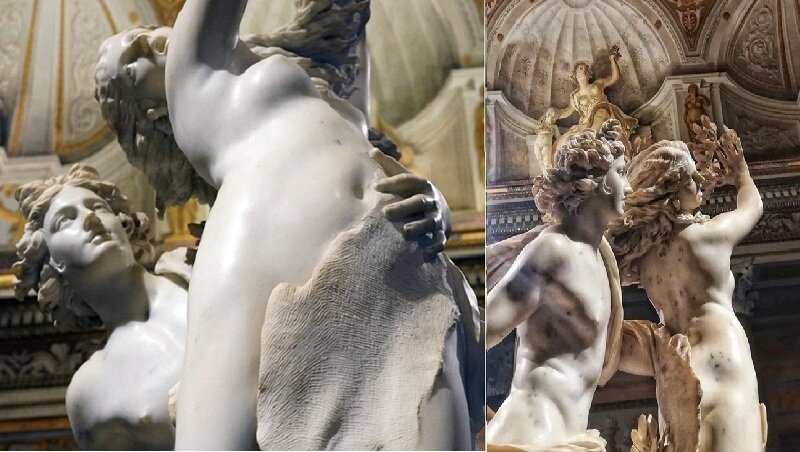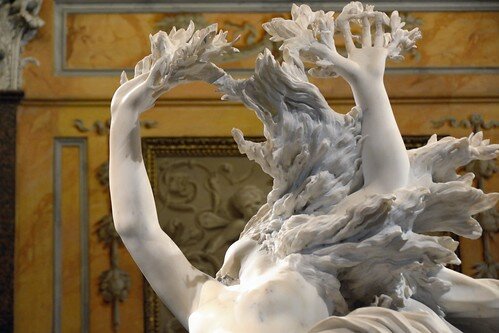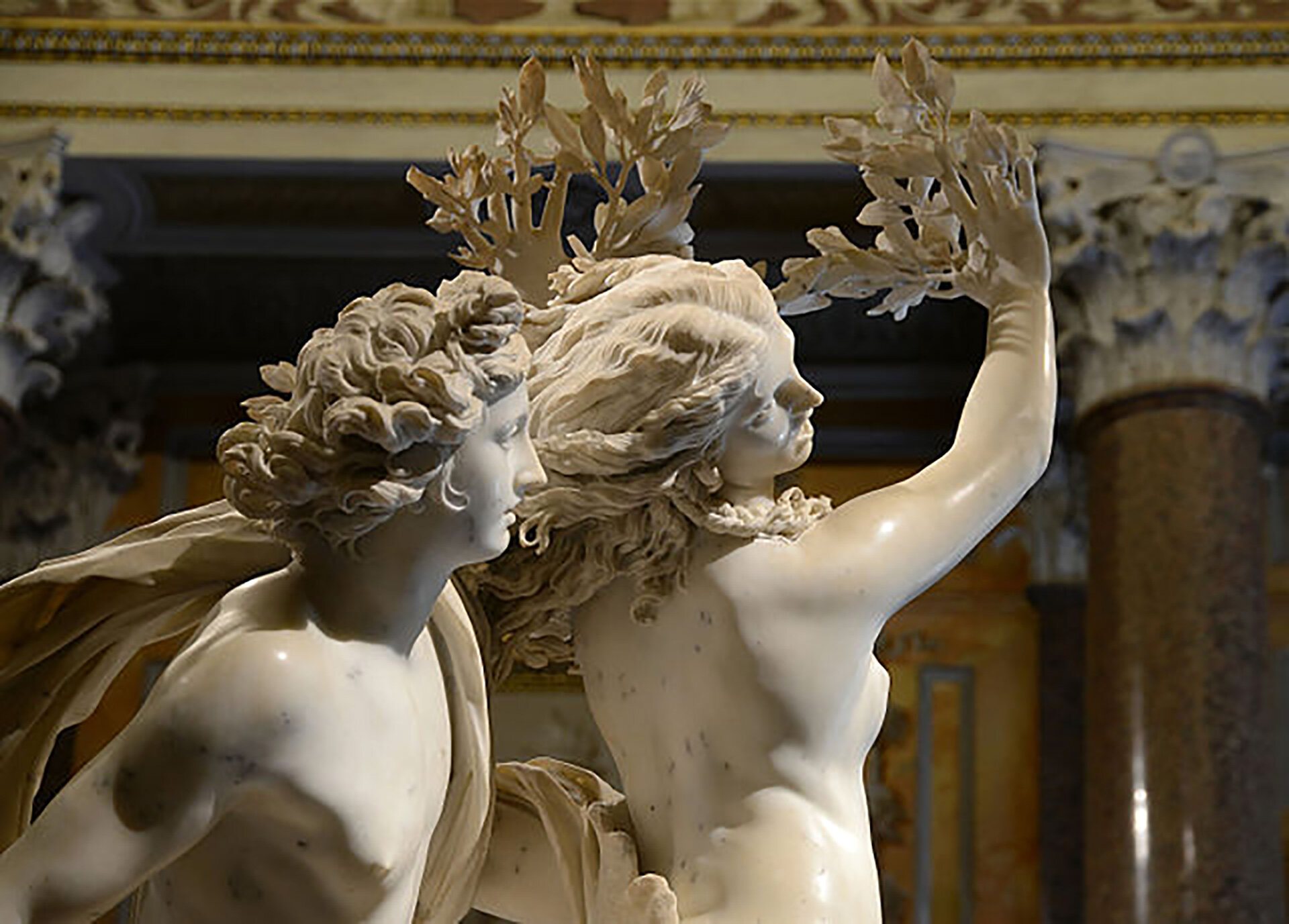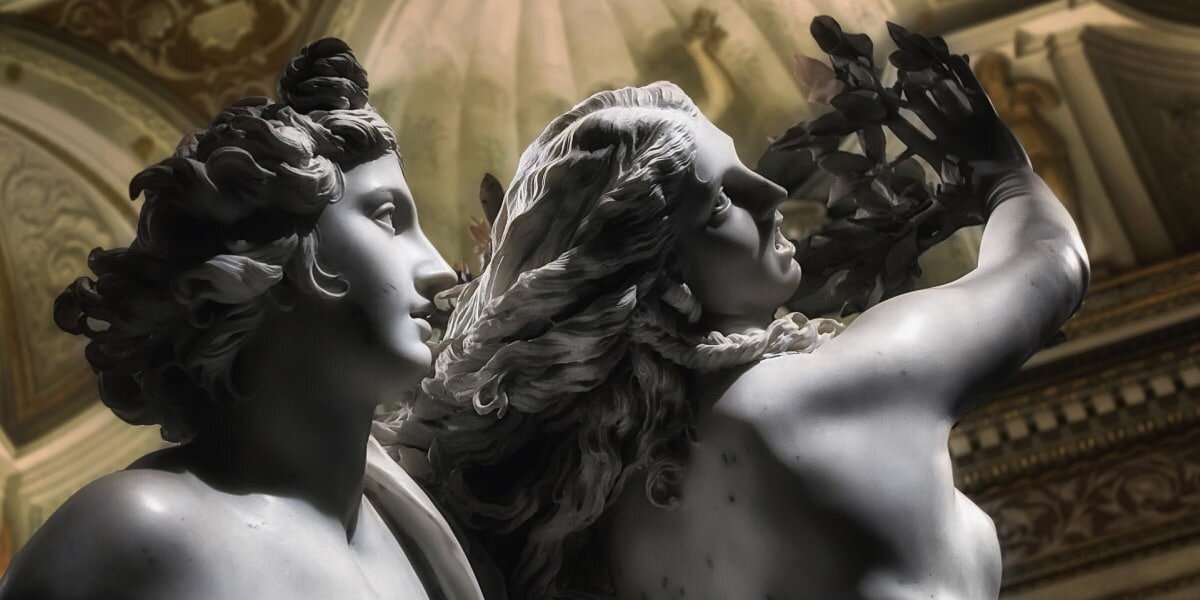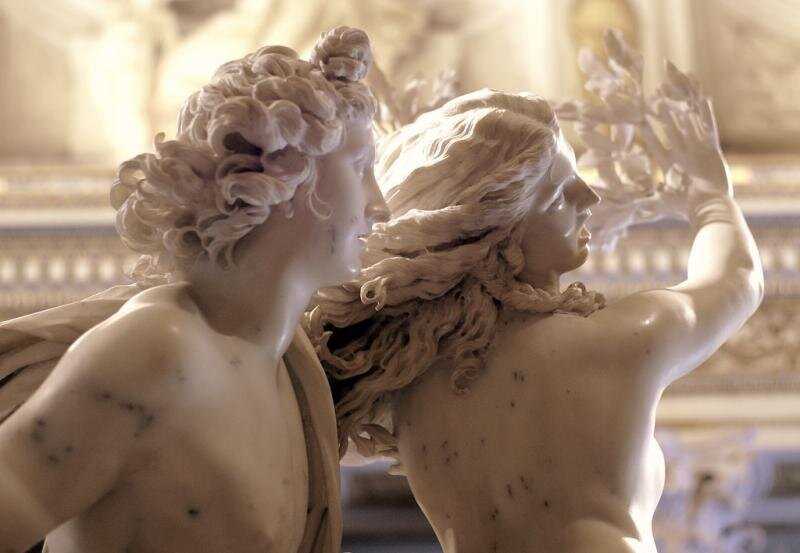When famed Baroque sculptor Gian Lorenzo Bernini unveiled Apollo and Daphne in 1625, the marble work was resoundingly hailed as a meraviglia—a marvel.
By Alexxa Gotthardt
Not yet 30 years old, the sculptor had captured motion, transformation, sexual appetite, and terror more convincingly than any other artist working in stone before him. “Immediately when it was...finished, there arose such a cry that all Rome concurred in seeing it as a miracle,” art historian Filippo Baldinucci recalled of the masterpiece’s public debut, in his 1682 biography, Life of Gian Lorenzo Bernini.
Almost 400 years later, Apollo and Daphne remains mesmerizing for both its formal mastery and its disturbing, profoundly relevant subject matter: the ravenous pursuit of a woman, by a man who won’t take no for an answer.
Gian Lorenzo Bernini, Apollo and Daphe, 1622–25. Image via Wikimedia Commons.
Bernini began carving the sculpture in 1622, at just 23 years old. Already singled out as a prodigy and favored artist of the Roman papacy, he’d been commissioned by the notoriously indulgent Cardinal Scipione Borghese to create a series of sculptures for the cardinal’s palazzo. Though religious art took precedence in Renaissance and Baroque Italy, the Vatican also allowed—and in many cases, encouraged—the depiction of mythological themes. Artists like Bernini used these dramatic tales, full of violence and thinly veiled eroticism, to push the limits of acceptability.
Detail of Gian Lorenzo Bernini, Apollo and Daphe , 1622–25. Image via Wikimedia Commons.
In this sculpture, Bernini depicts the mythological drama that occurs between Apollo, god of music and poetry, and Daphne, a virginal nymph. The artist was likely inspired by the classical sculpture Apollo Belvedere (circa 2nd century AD) as well as the ancient Roman poet Ovid’s rendition of the myth. In Ovid’s telling, the story begins with a pissing contest between two male gods: After Apollo insults Eros (or Cupid), Eros takes revenge by orchestrating a scene of unrequited passion and possession. He shoots a golden arrow into Apollo, which makes him fall desperately in love with Daphne, then embeds a leaden arrow in her, enhancing the repulsion she feels towards her pursuer.
Apollo Belvedere, ca. 120–40 AD. Image via Wikimedia Commons.
Daphne flees Apollo’s hungry advances. When he catches up to her, she sacrifices her human body and assumes the form of a laurel tree. Even then, as Ovid explains, Apollo doesn’t let up: “[He] loved her still. He placed his hand where he had hoped and felt the heart still beating …
Under the bark and he embraced the branches, as if they were still limbs, and kissed the wood.” Daphne, however, still resisted: “And the wood shrank from his kisses.”
Source: artsy

